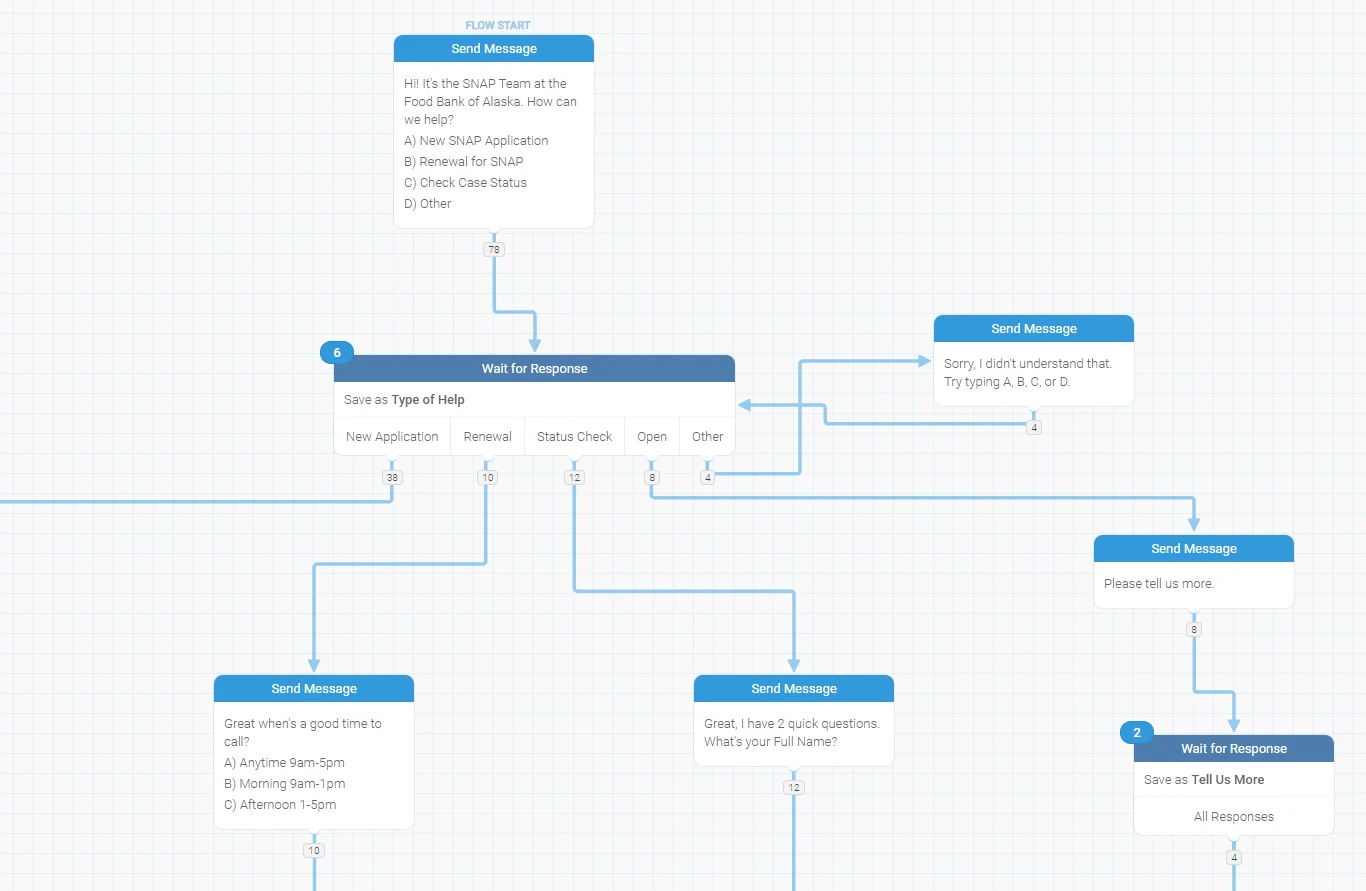For people struggling to afford food, gaining access to the federal supplemental nutrition assistance program (SNAP) is its own challenge. They have to figure out if they’re eligible, how to sign up, and perhaps most dauntingly be willing to approach strangers at various nonprofits that can help to explain their problem.
In Anchorage, Alaska, that process can now start a little more informally, with a simple text message. Residents who text “SNAP” to a designated number receive an automatic reply with a few multiple-choice options. “Hi, it’s the SNAP team at the Food Bank of Alaska. How can we help?” the message goes. A resident can then just text the letter A, B, C, or D to signal that they want to start a new SNAP application, renew their SNAP benefits, check their case status, or ask another question entirely.

After people signal their intention, the nonprofit Food Bank of Alaska handles the rest of the process. But the process itself was kick-started by a group of Anchorage municipal workers called the i-team, a Bloomberg Philanthropies-funded troop of leaders at City Hall designing new ways to use technology to improve social good in the community.
As Bloomberg points out in a recent analysis of the effort, that means a city team can now collaborate with a statewide nonprofit to access federal aid. “We hope to reach the 10,000 Anchorage SNAP eligible residents who are eligible but not enrolled in SNAP and could benefit by having access to needed food,” said Brendan Babb, Anchorage’s chief innovation officer, in an email to Fast Company.
The idea kicked off on August 21 with a limited ad on Facebook. Initially, the city wanted to limit news of their rollout so they could work out any kinks in the process. In the first few weeks, 60 people applied for new benefits or renewals. Many applications are still being processed, but so far at least 10 people have been formally added to the roster. The cost per new enrollee is about $20 per person, notes Babb. But that should drop exponentially as their campaign expands.
It also simplifies the enrollment process for Food Bank of Alaska, which previously sought out potential recipients by visiting shelters, libraries, and food pantries, the analysis reports. The idea is to give people a good way to reach agencies that can help them, instead of those agencies inefficiently searching them out.
“Mayor Berkowitz has strongly supported if we can help residents become more stable that is the right thing to do and provides better students and a better workforce in the future and additionally saves the city money in costs for services,” he said. Citywide, he estimates it could lead to an additional $20 million being spent annually in city neighborhoods, as people use the assistance to shop in local stores, many of which have been hard hit by the effect of declining oil prices on the region’s economy. It’s also free for other cities to adopt: “This project also easily scales to rural areas of Alaska only accessible by planes.”
Anchorage’s i-team started in 2017 with a $1.5 million grant from Bloomberg Philanthropies. The organization’s government innovation program has funded 21 teams in the U.S. since 2012, with a total of 32 in cities around the world. Part of the goal is to highlight the idea that improved government pays for itself by building tax rolls, improving quality of life for citizens who have fewer civic concerns, and improving the economy in places that might otherwise be struggling.
“Since the beginning of the program in 2012, we have done three rounds of funding and cities have begun making their own investments,” adds Roland Persaud, part of Bloomberg Philanthropies’ government innovation team, in an email to Fast Company. [F]or every one innovation officer we fund, about four more are funded by city government.” More than half their U.S. teams are now supported solely by city budgets.
As cities with i-teams build their own programs, they can lower the learning curve for other i-teams that are interesting in doing something similar. Alaska had already implemented Code for America projects that were more rudimentary, which allowed people to text to learn their food aid balance or simply to see if they might be eligible for services. This expands those efforts in a more comprehensive way. “We were definitely inspired by the Durham i-team’s DEAR project to help residents restore their driver’s licenses by texting,” adds Babb. “The idea of putting the work on the government [versus] the resident was really cool.”
Recognize your brand’s excellence by applying to this year’s Brands That Matter Awards before the early-rate deadline, May 3.
